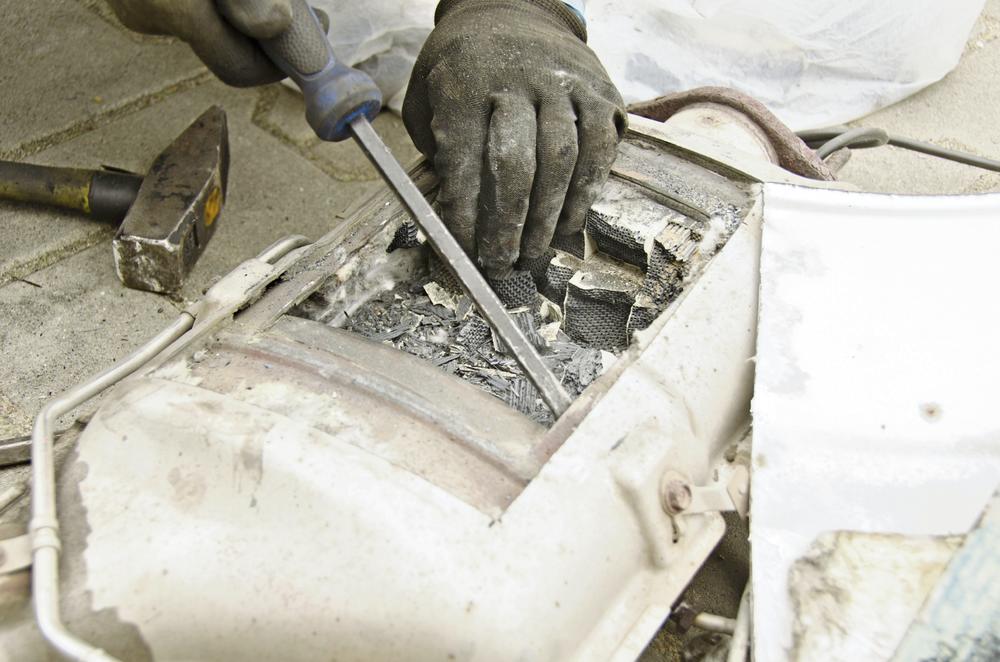
Now that you know what the main causes of DPF issues are, the problem is how to detect it? There are plenty of visible signs that show that your DPF has become blocked.
Here are some of them:
WARNING LIGHT ON YOUR DASHBOARD
Diesel vehicles today are equipped with multiple sensors that track the performance in the engines. If they detect issues with the performance of your engine they notify the computer of your vehicle. This is the reason the orange warning icons on your dashboard illuminate.
Even though seeing the dashboard of your car shining like a Christmas light is unpleasant, it can help you spot DPF-related problems and have them fixed before they escalate.
INCREASED FUEL CONSUMPTION AND REDUCED ENGINE POWER
An increased rate of the consumption of gasoline is one the most evident indicators of DPF failure. The primary function of your diesel particulate filters is to eliminate emissions from your car’s engine while capturing soot particles. This means that if the DPF is clogged the exhaust gasses are not able to exit the engine as swiftly as they should.
The buildup of exhaust gasses impacts the overall performance of the engine which causes it to feel weaker. In this situation, drivers typically use gas to boost their power. But, this strategy does not seem to work. The engine is consuming more energy in order to eliminate gasses that escape from the DPF and leaves less energy to accelerate.
THE ENGINE WON’T START
The buildup of exhaust gasses may prevent the engine from starting. The engine won’t commence until the engine’s pressure decreased.
However, this doesn’t have to be necessarily bad. This is your vehicle’s strategy to mitigate fatal damage to your engine and diesel particulate filtration. What’s next? Get in touch with a professional as soon as possible.
TURBOCHARGER PROBLEMS
A blocked dpf can cause a variety of turbocharger problems that can cause gas or oil leaks. That is, the gas which accumulates within the engine is unable to go. This is why it begins flowing out of the turbocharger. It could also lead to leaks in oil and reduce overall turbocharger efficiency.
DPF MAINTENANCE TIPS
To increase the condition that your diesel particles filter and extend the lifespan of your filter, you need to ensure it’s able to regenerate itself once filled with soot. Now, there are two main types of DPF regeneration – active and passive.
PASSIVE DPF REGENERATION
Passive regeneration happens at the point that the engine’s temperature gets that are higher than 350 degC. The higher temperatures allow the DPF to eliminate accumulation of soot that has accumulated when the car is used for normal driving.
One of the major advantages in passive regeneration is this is a fully automated process. It’s almost invisible to the driver. However DPF regeneration is passive. DPF regeneration is only possible after the engine has reached the desired temperature, which is usually during longer rides and at greater speeds.
ACTIVE REGENERATION
If the levels of soot in the DPF reach the limit of 45%, the pressure sensors are able to detect this. That’s the time when the engine management systems activates the fuel injection process by transferring raw fuel into the diesel Oxidation catalyst (DOC). This way, it boosts the temperature of the exhaust and creates the optimal conditions for active regeneration.
Similar to passive regeneration active regeneration is an automated procedure. It doesn’t require any effort from the driver. Like its passive counterpart the active generation process is feasible when the vehicle is driven for longer periods of time and at greater speeds.

